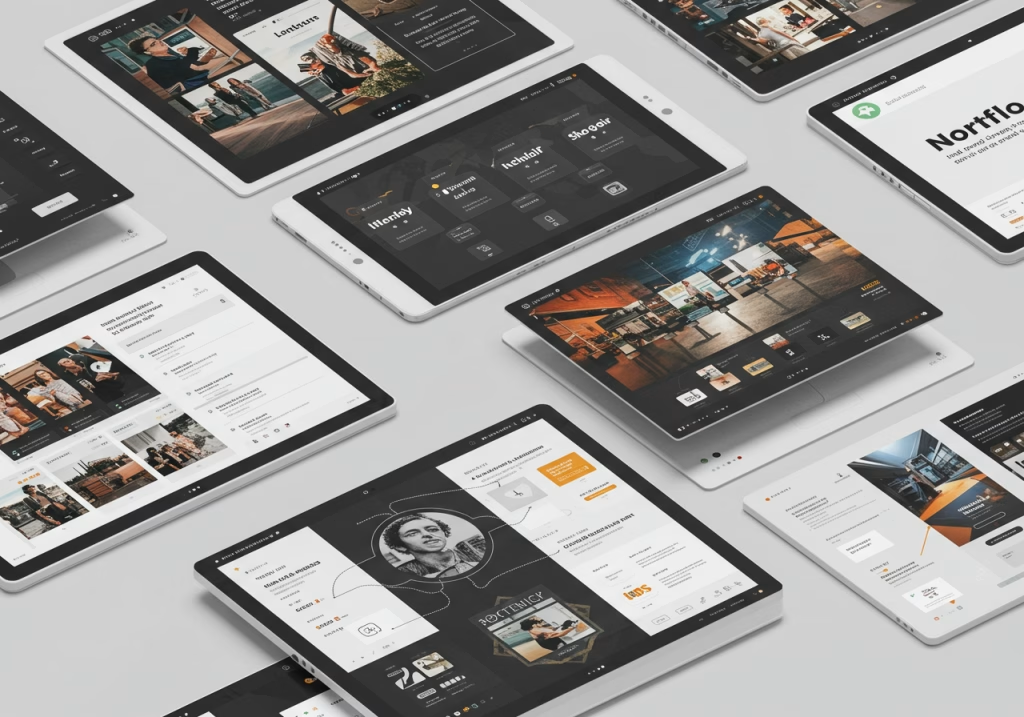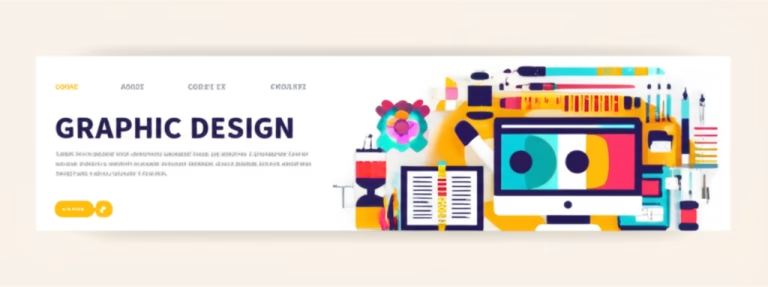Are You Struggling to Build a Design Portfolio Without Real Clients?
It’s a common dilemma for aspiring designers: you need a portfolio to get clients, but you need clients to build a portfolio. This seemingly endless loop can be incredibly frustrating, leaving you feeling stuck before you even begin. Many new designers find themselves asking, “How can I showcase my skills if I haven’t had any ‘real’ projects?” The good news is, you don’t need a long list of paid clients to create a compelling portfolio that stands out. What you need is a strategic approach to positioning portfolio pieces, transforming your potential into undeniable proof of your abilities.
This article will guide you through the process of building a powerful design portfolio from the ground up, focusing on how to effectively present your work to attract the right opportunities. We’ll explore practical strategies to overcome the initial hurdles, helping you define your unique value and present it in a way that resonates with potential clients and employers. By the end, you’ll have a clear roadmap to create a portfolio that not only showcases your talent but also positions you as a go-to designer in your chosen niche.
Table of Contents
Understanding the Power of Your Portfolio
Think of your portfolio not just as a collection of your best work, but as your most potent marketing tool. It’s your visual resume, your pitch deck, and your personal brand statement all rolled into one. For beginners, it’s crucial to understand that a strong portfolio isn’t about the quantity of projects, but the quality and the story behind them. Each piece should serve a purpose, demonstrating your problem-solving skills, design process, and the specific value you can bring to a project. A well-constructed portfolio speaks volumes, even if your experience is limited.
Your portfolio is your first impression, and often, your only chance to make a lasting one. It should reflect who you are as a designer, the type of work you want to do, and the kind of clients you want to attract. This means being intentional about every piece you include and how you present it. The goal is to make it easy for viewers to understand your capabilities and envision you working on their projects. This strategic positioning portfolio approach is what separates aspiring designers from those who successfully launch their careers.
Building Your Portfolio From Scratch: Practical Steps
If you’re starting with little to no client work, don’t despair. Many successful designers began their careers by creating self-initiated projects, mockups, and even redesigns of existing brands. These “passion projects” are incredibly valuable because they allow you to demonstrate your skills, creativity, and design process without the constraints of a client brief. They show initiative and a genuine love for design.
Define Your Niche and Focus
Instead of trying to be a generalist, consider focusing on a specific area of design that excites you – whether it’s branding, web design, UI/UX, or illustration. A focused portfolio helps you attract specific types of clients and opportunities. When you specialize, you become an expert in that field, making your positioning portfolio much stronger. It’s better to have 3-5 exceptional projects in a niche than 20 mediocre projects across various disciplines. Quality over quantity is key, especially when you’re just starting out. This clarity helps potential clients understand exactly what you offer.

Create Simulated Projects or Redesigns
This is where creativity truly shines. Think of a local business, a fictional company, or even a well-known brand that could benefit from a design refresh. Develop a comprehensive project from concept to execution. For example, if you’re interested in web design, create a complete website redesign for a local cafe. If it’s branding, develop a full brand identity for a hypothetical startup. Document your process: research, sketching, wireframing, mood boards, and final mockups. This shows your thought process, not just the final output.
These simulated projects are powerful because they allow you to showcase your ideal work. They demonstrate your ability to solve real-world problems through design, even if the “client” was you. Remember to treat these projects as if they were for a paying client – put in the same effort, professionalism, and attention to detail. This is a direct way to build a strong positioning portfolio that aligns with your career aspirations.
Choose the Right Platforms
While a personal website offers the most control and professionalism, platforms like Behance and Dribbble are excellent starting points for showcasing your work. They offer built-in communities and exposure. When using these platforms, ensure your project descriptions are detailed, explaining your process, challenges, and solutions. Don’t just upload images; tell the story behind your designs. Consider platforms like Behance for comprehensive case studies and Dribbble for quick, visually appealing shots. A personal website, however, allows for complete customization and a more refined presentation of your unique brand. For additional insights on professional design standards and resources, explore organizations like the American Institute of Graphic Arts (AIGA).

Master the Art of the Case Study
Beyond pretty pictures, clients want to see how you think. A case study walks the viewer through your design process, explaining the problem, your approach, the solutions you developed, and the results. Structure your case studies clearly with headings, bullet points, and visuals. Explain your decisions, even if they seem obvious to you. This transparency builds trust and demonstrates your expertise. It’s a key element in effectively positioning portfolio projects for maximum impact.
Positioning Yourself in the Creative Market
Building a portfolio is only half the battle; the other half is knowing how to use it to attract your ideal clients. This involves understanding your unique value proposition and communicating it clearly. Your portfolio is a tool for connection, not just display.
Identify Your Ideal Client
Who do you want to work with? What industries excite you? What kind of problems do you want to solve? Defining your ideal client helps you tailor your portfolio and messaging. If you want to work with tech startups, your portfolio should reflect a modern, innovative aesthetic. If you prefer small businesses, showcase designs that are relatable and community-focused. This targeted approach makes your efforts far more effective than a scattergun approach.
Craft Your Unique Value Proposition
What makes you different? What unique blend of skills, experiences, and perspectives do you bring? This is your personal brand. Are you exceptionally fast? Do you specialize in accessible design? Are you a master of brand storytelling? Clearly articulate what makes you stand out. This clarity is vital for your positioning portfolio and for confidently presenting yourself to the market.
Present Yourself with Confidence and Clarity
When you share your portfolio, whether in an interview or a client meeting, be prepared to talk about your work. Practice explaining your design decisions, your process, and the impact of your work. Be enthusiastic and authentic. Your confidence in your abilities, backed by a strong portfolio, is incredibly persuasive. Remember, you’re not just selling a design; you’re selling a solution and your unique ability to provide it.
Final Thoughts: Your Journey as a Designer
Starting a design career can feel overwhelming, but with a strategic approach to your portfolio, you can build a strong foundation for success. Remember that every project, whether client-based or self-initiated, is an opportunity to learn, grow, and refine your skills. Embrace challenges as learning experiences and continuously seek feedback to improve.
Your portfolio is a living document that will evolve with your career. Keep it updated, remove outdated work, and always add new, relevant projects that reflect your current goals. By consistently focusing on the quality and strategic positioning portfolio pieces, you’ll not only attract opportunities but also build a fulfilling and impactful design career. Believe in your talent, stay persistent, and let your portfolio open doors to incredible possibilities.
Recommended Readings:
– Portfolio and Career – Learn how to create a compelling design portfolio that showcases your skills and helps you land your dream design job. A step-by-step guide for beginners



